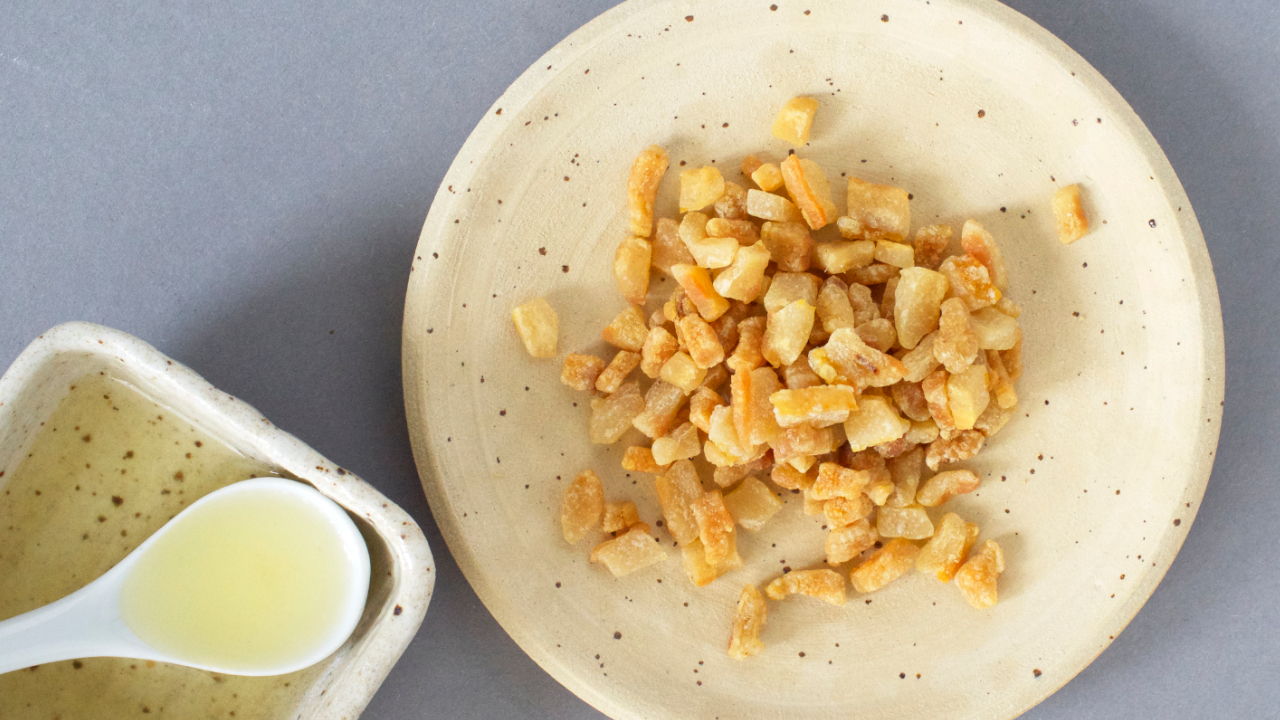Rendering pork fat results in two wonderful ingredients, crispy pork lard and butter-like texture pork lard. In most Chinese dishes, pork lard is the choice of oil used as it contributes delicious flavours. To enhance the taste of a dish, crispy pork lard is sometimes sprinkled on top. It not only serves the purpose of garnishing but also adds delicious bites of crispiness to the dish.
It is not advisable to consume pork lard on a daily basis as it is high in calories, unless that is your preference. That being said, it is actually a secret ingredient to many Chinese traditional dishes. That explains why meals from your grandma always taste better. It's all due to the usage of pork lard. The process to making crispy pork lard is rather simple but do ensure it is fragrant, clean and clear. Let's go through with the basics and tips to achieve that.
Which part of pork fats to use?
There are three parts of the pig where pork fats can be obtained. Depending on which part is used, there is a difference in flavour among them.
| Type | Description | Usage |
|---|---|---|
| Leaf lard | The fat which surrounds the kidney and also found within the loins of a pig. It is the highest quality of lards as it has little to no pork smell or taste. | Results in clear and clean lard. Best for making delicious flaky crusts. |
| Fat back | Found on the back of the pig. | Often rendered and used in stir-fried and sautéed dishes. This is the best for making crispy pork lard. |
| Belly | From the belly of the pig. Comes between layers of meat. | Separate the fats from the meat. Also used in stir-fried and sautéed dishes. Fats from the belly is used in this recipe. You'll be able to use the meat along with the rendered fats and crispy lard. |
Where to buy pork fats?
The different types of pork fats are usually sold at the butcher and sometimes in supermarkets. If you are unable to find any leaf lard or fat back, choose pork belly with thicker layer of fats. This helps when separating the fats from the meat.
How to make clear lard?
Rendering pork lard can be a little tricky. It's best to begin at medium heat to allow the pork fats to sweat and release its oil. Once the oil is released, continue heating the pork fats over low heat. This will ensure that the pork lard is not over heated, hence resulting in nice clear lard.
How to make fragrant and crispy pork lard?
Preparing fragrant and crispy pork lard begins with chopping the pork fats into equal sizes before frying. You may want to place the pork fats in the freezer for 10 minutes before chopping them as the coldness will harden the fats. Otherwise, the rubbery texture of the fats makes it difficult to cut them into equal sizes.
The next step is blanching the chopped pork fats in boiling water. This removes the pork smell as well as impurities from the fats. You'll noticed the dirt floating during the blanching process.
Lastly, when frying the pork lard, do not remove them if bubbles are still noticeable in the oil. This indicates that there is moisture in the pork fats.
Storing pork lard
Fried pork lard is best eaten immediately after frying. Otherwise, cool them to room temperature before storing them unrefrigerated in an air-tight container lined with a piece of kitchen paper at the bottom. Stored this way, the crispy pork lard can be kept for up to a week. Do place the air-tight container in a cool area away from the sunlight. Refrigerated crispy pork lard will turn chewy and lose their crispiness.
Rendered pork lard should be stored in an air-tight container and kept in the refrigerator. It should last for a year if properly rendered. Before using pork lard, do check if there is a rancid smell. Do not use if it does.
Mold on pork lard
Do not consume pork lard that is moldy. This indicates the presence of moisture and that it was not fried and rendered properly.

